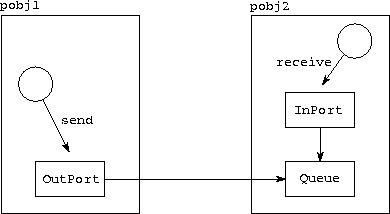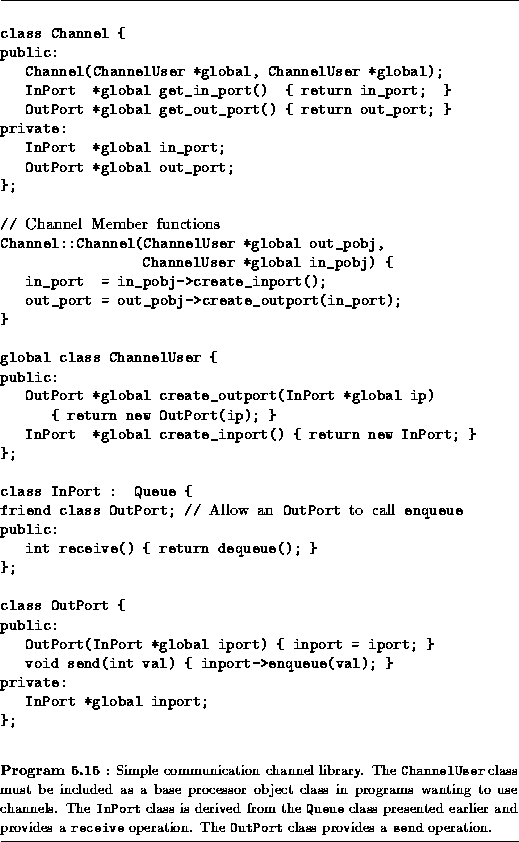![[DBPP]](pictures//asm_color_tiny.gif)





![[Search]](pictures//search_motif.gif)
Next: 5.12 Case Study: Fock Matrix Construction
Up: 5 Compositional C++
Previous: 5.10 Performance Issues
In the first of two more substantial examples, we present an
implementation of the channel library used in
Program 5.3. This case study illustrates how
CC++
can be used to develop libraries implementing particular programming
paradigms: in this case, channel communication.

Figure 5.8: Data structures used in the CC++
channel library.
In addition to a queue, a channel comprises an OutPort object
and an InPort object used to encapsulate pointers to the queue.
Processes apply send and receive operations to the outport and inport,
respectively.
The channel library provides functions to create a channel, to extract
pointers to inport and outport structures, and to send and receive
messages. A channel is constructed from three basic data structures:
the message queue itself and outport and inport objects used to
contain pointers to the queue (Figure 5.8). The outport
is created in the same processor object as the sender, while the
inport and message queue are created in the same processor object as
the receiver.
The implementation, Program 5.15, defines the processor
object ChannelUser and the classes Channel, InPort,
and OutPort. The processor object provides functions
create_inport and create_outport that create the inport and
outport associated with a channel; any program wanting to use the
channel library must include this processor object as a base class.
Recall that this was done when defining the processor object
Construction in Program 5.3.
The Channel class provides three public member functions: the
constructor Channel, which creates a new channel linking two
specified processor objects; get_out_port, which returns a
pointer to the channel's outport; and get_in_port, which
returns a pointer to the channel's inport.

The InPort class is derived from the Queue class of
Program 5.6. It adds to the functions already defined
in that class a new function receive, which simply dequeues a
message from the queue. Finally, the OutPort class encapsulates
a global pointer and provides a send function that invokes an
enqueue operation on the message queue referenced by this
pointer.
![[DBPP]](pictures//asm_color_tiny.gif)





![[Search]](pictures//search_motif.gif)
Next: 5.12 Case Study: Fock Matrix Construction
Up: 5 Compositional C++
Previous: 5.10 Performance Issues
© Copyright 1995 by Ian Foster

![[DBPP]](pictures//asm_color_tiny.gif)





![[Search]](pictures//search_motif.gif)
